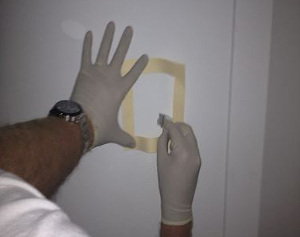Tribunal sticks to existing meth standard
Hopes of a change in the Tenancy Tribunal’s approach to meth contamination seem misplaced, with the release of its first post-Gluckman report orders on meth cases.
Thursday, July 12th 2018, 8:00AM
by Miriam Bell

Sir Peter Gluckman’s bombshell report into meth contaminated houses found there are neglible health risks from third-hand exposure to meth.
It also suggested revising the current testing regime and introducing a much higher testing level of 15 micrograms per 100cm2 as opposed to 1.5 micrograms per 100cm2.
But while landlords were relieved by the report, they were also left in limbo because the existing NZS 8510: 2017 standard for meth remains in force until officially changed.
To date that has not happened and many landlords have been looking to the Tenancy Tribunal to see how adjudicators will respond to the changed landscape.
The Tribunal has now published the first six orders on meth contamination to be issued following the release of the Gluckman report – and they suggest that nothing has changed for the Tribunal.
Of those six orders, two are about adjourning proceedings and, as such, aren't relevant. But the four other orders all stick to the existing 1.5 microgram standard.
In all four cases, the meth readings exceeded the existing Ministry of Health guidelines, which employ the 1.5 microgram standard.
One case did not give the actual levels but in the other three all the readings were well below the 15 microgram standard recommended in the Gluckman report.
The highest reading in all four cases was for an individual room which had a level of 4.8 micrograms.
But adjudicators specifically referred to the existing standard and Ministry of Health guidelines in all four orders, with one noting that, under the current guidelines, decontamination is required for readings of 1.5 micrograms and over.
Only one of the orders – Riverlands Real Estate Ltd v Jasmine Walker-Lee - appears to refer to the Gluckman report.
It says: “There is currently some debate about the health impact of meth, however I agree that the use of premises for an unlawful purpose is something to be discouraged.”
These Tribunal orders were all made in the days immediately following the release of the Gluckman report and could have been written earlier.
But they suggest that the Tribunal will be employing a conservative approach and adhering to the existing 1.5 microgram standard – until a new standard is officially adopted.
In stark contrast, Housing NZ has already changed its approach to the testing and decontaminating of its properties so that they are in line with Gluckman’s recommendations.
Likewise, the Real Estate Authority (REA) has issued new disclosure guidelines which mean agents only have to tell potential buyers if a property has a meth contamination reading of 15 micrograms or above.
Tenancy.co.nz managing director Craeg Williams says that if Housing NZ and the REA are now working to a 15 microgram level, there is no reason why the Tribunal shouldn’t follow suit.
His mother recently had to pay $20,000 to decontaminate a property with a meth reading of 8 micrograms and he believes many other landlords will have had to pay thousands of dollars for unnecessary remediation work.
“The Government and the Tenancy Tribunal urgently need to adopt a new standard for residential tenancies – as the residential rental industry urgently needs clarification.”
Housing Minister Phil Twyford has said there will be a public consultation document on meth regulations ready later this year, while Standards New Zealand has said they are happy to engage with people seeking changes to the existing standard.
Read more:
| « New alliance to up property manager standards | Rental “fix” plan not realistic » |
Special Offers
Comments from our readers
No comments yet
Sign In to add your comment
| Printable version | Email to a friend |


